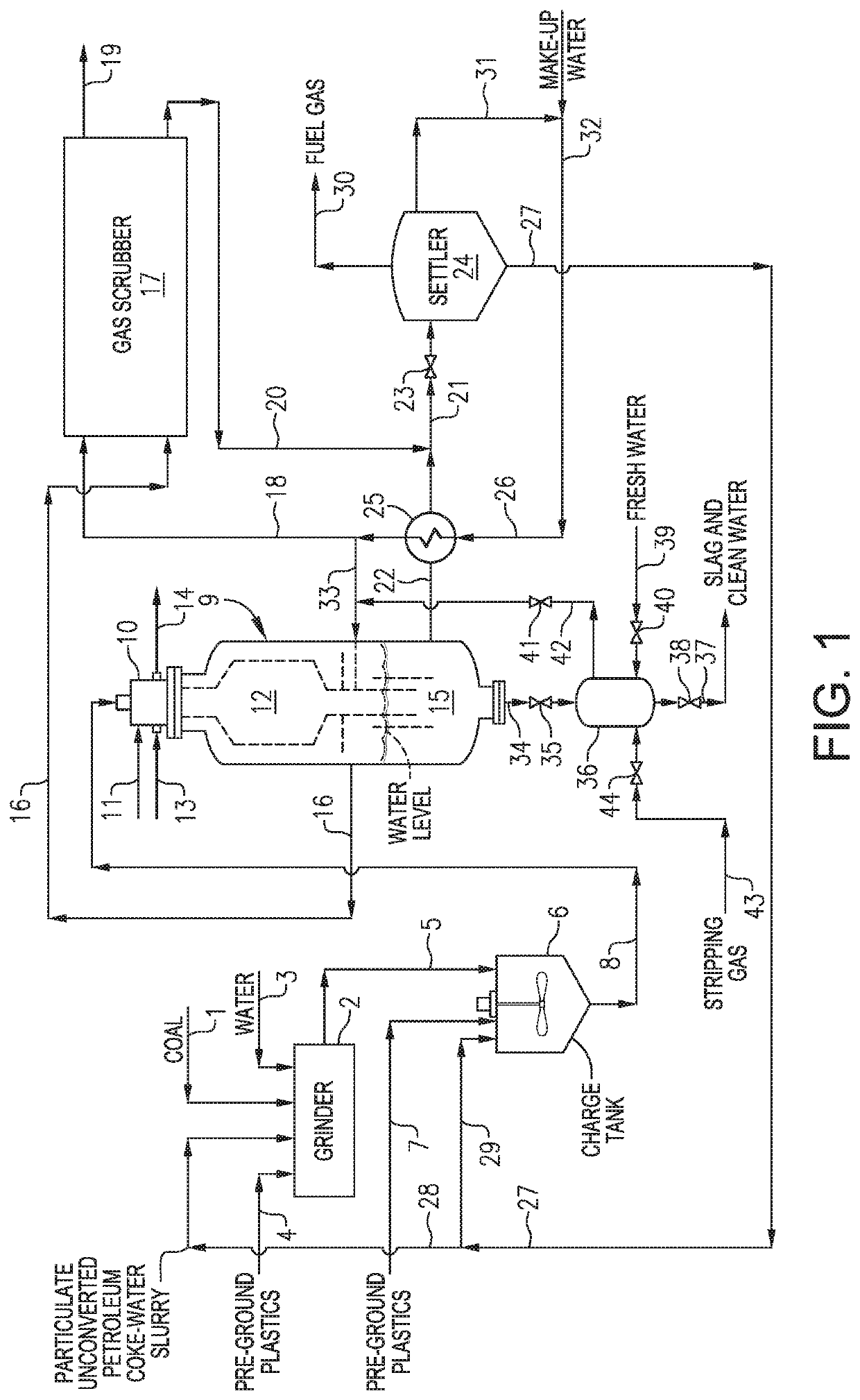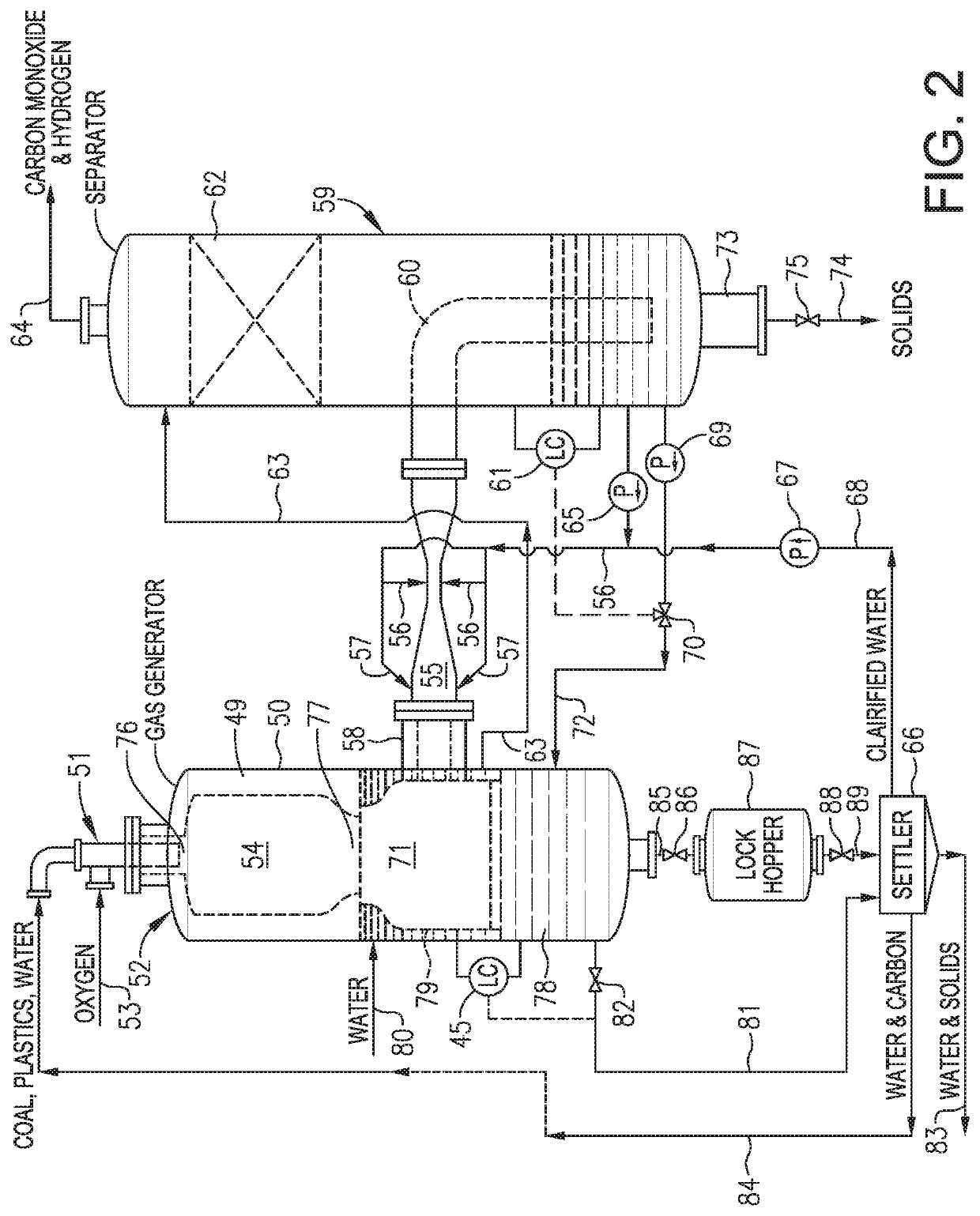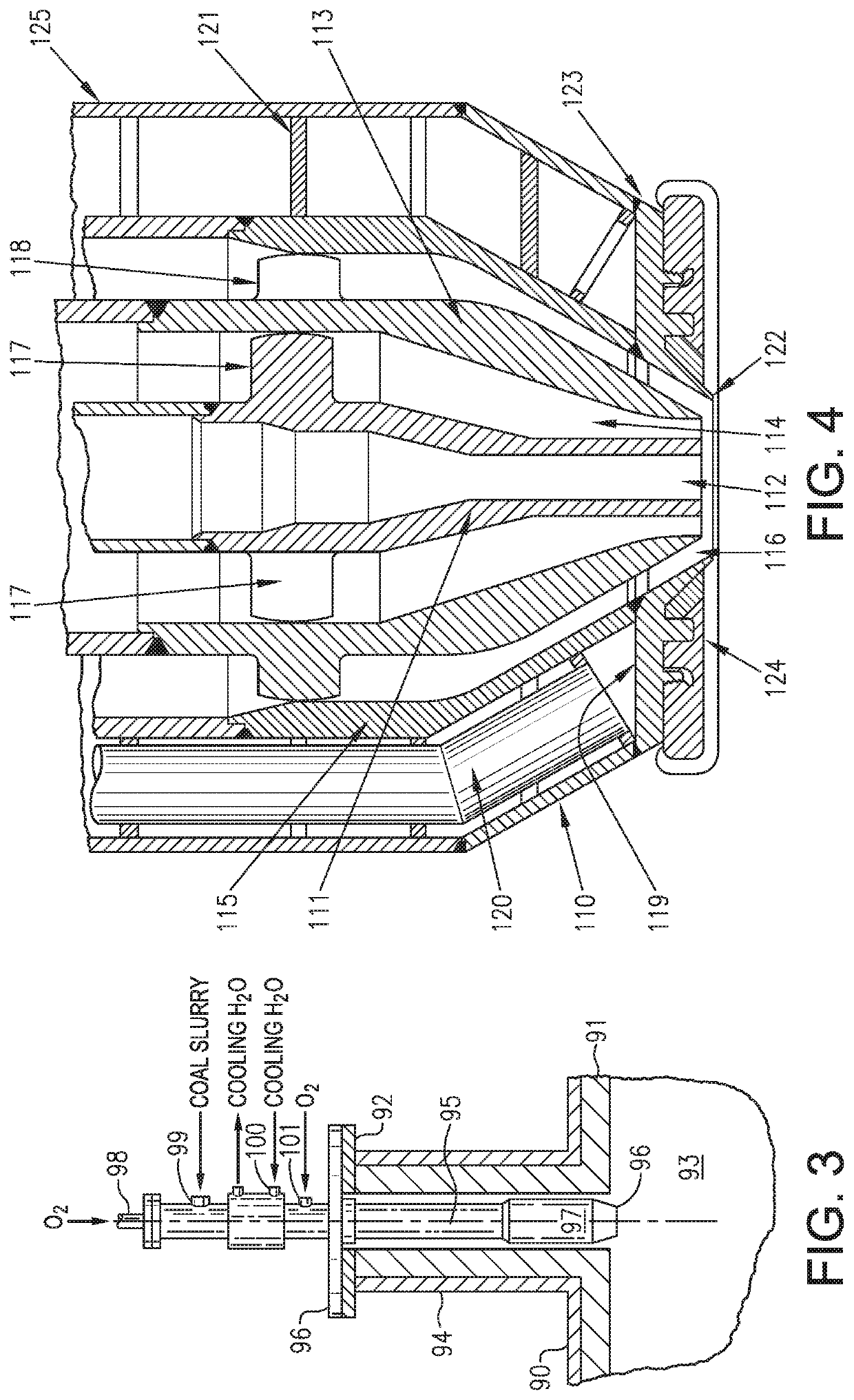Gasification of plastics and solid fossil fuels to produce organic compounds
a technology of solid fossil fuels and plastics, which is applied in the field of global waste disposal, can solve the problems of reducing the amount of carbon monoxide that could have been produced, unacceptable syngas composition variability, and generating undesirable amounts of carbon dioxide in the raw syngas stream
- Summary
- Abstract
- Description
- Claims
- Application Information
AI Technical Summary
Benefits of technology
Problems solved by technology
Method used
Image
Examples
example 1
[0438]Plastics are milled to a nominal particle size between 1 mm and 0.5 mm. Coal is dried and crushed in a Retsch jaw crusher to a nominal size of <2 mm. A predetermined amount of water is added to a 4.5 L metal bucket. Ammonium lignosulfonate is added to the water in the metal bucket and mixed with a spatula until it is distributed evenly. Ground plastics and coal are added to the water and ALS mixture in the metal bucket and then the blend is mixed by an overhead mixer. Aqueous ammonia is added to the slurry to adjust the pH to 8±0.2. After being well mixed, the sample is placed in the laboratory rod mill equipped with 5 stainless steel rods at ½″×9″, 8 rods at ⅝″×9″, 8 rods at ¾″×9″, 2 rods at 1″×9″, and 1 rod at 1¼″×9″. The slurry is milled for 1 hour at approximately 28 rpm (mill outside diameter=11.75 inches). The aqueous ammonia is again used to adjust the pH to 8±0.2 while the slurry is mixed by the overhead mixer. Each batch of slurry is made to be a total of approximatel...
example 2
[0446]Batches of a coal / plastic slurry are prepared as stated in Example 1 and in the amounts reported in Table 2 using low density polyethylene as the plastic. The results of stability and pumpability are reported below in Table 2 using Method B in each case. A report of “stable” in the stability column indicates a viscosity reading of less than 100,000 cP at the time period stated.
[0447]
TABLE 2Effect of increasing ground LDPE loadings on coal-water slurry properties.SubstrateSubstrateSubstrateTargetMeasuredStabilityStabilityStabilityID% of solids% of totalALS %Solids %Solids %Viscosity5 min10 min20 minOverallControl0% 0%0.20%69%69.4%4554cPStableStableStableGoodLDPE2%1.4%0.20%69%70.0%5357cPStableStableStableGoodLDPE5%3.4%0.20%69%69.8%9293cPStableStableStableGoodLDPE10% 6.9%0.40%69%68.6%50622cPStableNANAToo Viscous
[0448]All samples remained stable at 5 minutes. However, at a 10% of solids loading, the LDPE sample would be considered too viscous to be effectively pumpable.
example 3
[0449]All recycle plastics are size reduced and ground such that they pass through a 1.5 mm screen. Batches of a coal / recycle plastic slurry are prepared as stated in Example 1 and in the amounts reported in Table 2 using a variety of different types of plastics according to the legend below. The results of stability and pumpability are reported below in Table 2 using Method B in each case.
[0450]The following legend describes the plastics employed:
PEX: crosslinked polyethylene
LDPE: Low-density polyethylene
PET: Polyethylene terephthalate
CDA: Cellulose diacetate
DEP: Diethyl phthalate
HDPE: High-density polyethylene
Acetate Tow: Cellulose acetate tow
[0451]
SubstrateSubstrateSubstrateTargetID% of Solids% of totalALS %Solids %ViscosityStabilityOverallControl 0% 0%0.40%69%5222>20minGoodPEX 2.00%1.38%0.20%69%14247>20minGoodPEX 5.00%3.45%0.20%69%4492>20minGoodPEX10.00%6.90%0.20%69%8858>20minGoodPEX12.00%8.28%0.20%69%12083>20minGoodPEX15.00%10.35% 0.20%69%20971>20minGoodPEX17.00%11.73% 0.20%...
PUM
| Property | Measurement | Unit |
|---|---|---|
| temperatures | aaaaa | aaaaa |
| number average molecular weight | aaaaa | aaaaa |
| weight percent | aaaaa | aaaaa |
Abstract
Description
Claims
Application Information
 Login to View More
Login to View More - R&D
- Intellectual Property
- Life Sciences
- Materials
- Tech Scout
- Unparalleled Data Quality
- Higher Quality Content
- 60% Fewer Hallucinations
Browse by: Latest US Patents, China's latest patents, Technical Efficacy Thesaurus, Application Domain, Technology Topic, Popular Technical Reports.
© 2025 PatSnap. All rights reserved.Legal|Privacy policy|Modern Slavery Act Transparency Statement|Sitemap|About US| Contact US: help@patsnap.com



